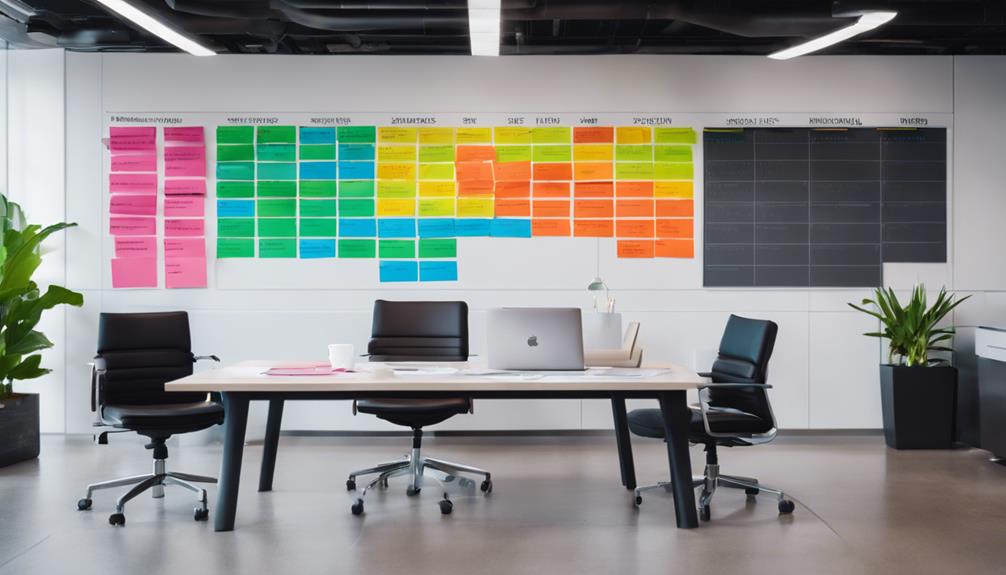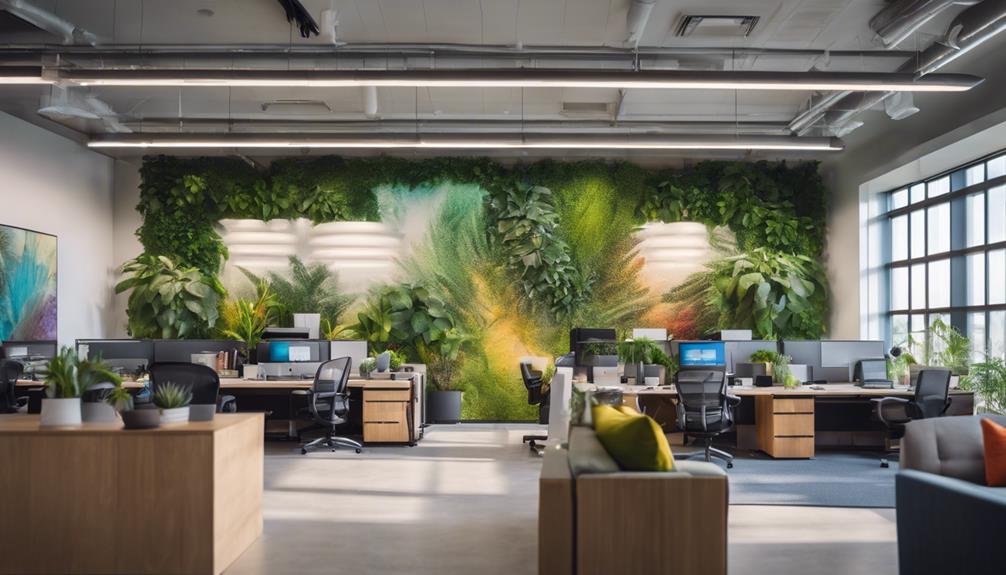Revamping your office is essential for maximizing impact on both employee well-being and productivity. Start by initiating strategic planning 12-18 months before any major changes. Engage with real estate brokers and designers early to guarantee a smooth shift. Incorporate innovative design principles, such as biophilic elements or Scandinavian minimalism, to create a harmonious workplace. Effective communication with all stakeholders will align expectations and mitigate risks. By enhancing aesthetics and functionality, you foster a collaborative atmosphere, boosting morale and creativity. This approach not only transforms your office space but also positions your company as a progressive employer. More insights on this topic await.
Key Takeaways
- Initiate strategic planning 12-18 months in advance to ensure a smooth office revamp process and alignment with business goals.
- Engage professional designers and builders early to leverage their expertise in creating innovative, functional office spaces.
- Incorporate biophilic design elements to connect employees with nature, enhancing well-being and productivity in the workplace.
- Utilize tenant improvement allowances to alleviate financial strain, allowing for better design choices and improved workplace aesthetics.
Strategic Planning Timeline

A well-structured strategic planning timeline is essential for ensuring a successful office revamp, allowing businesses to align their goals with the necessary design and construction phases well in advance of lease expiration.
Initiating planning 12 to 18 months prior is critical; larger organizations may require 2 to 3 years. Engaging with real estate brokers, designers, and builders 24 months before lease expiration maximizes options and minimizes rushed decisions.
It is important to note that office remodels often necessitate permits, which can take a minimum of eight months.
A typical timeline for a 5,000 to 10,000 square foot space includes two months for design, three months for permits, and another three months for construction, thereby emphasizing the importance of early engagement and meticulous planning.
Effective Communication Strategies

Establishing clear expectations and communication strategies is essential for maneuvering the complexities of an office revamp effectively. A well-defined communication plan should outline the frequency of meetings, reporting methods, and progress updates. This structured approach guarantees all stakeholders remain informed and engaged throughout the project.
By defining cost and schedule expectations from the outset, teams can mitigate risks associated with unforeseen challenges. Additionally, recognizing diverse communication preferences among team members fosters a collaborative environment, enhancing overall project success.
Regular check-ins and transparent dialogue not only build trust but also empower teams to address issues promptly. Ultimately, effective communication serves as the backbone of a successful office transformation, driving alignment and guaranteeing that objectives are met efficiently.
Global Design Inspirations

Exploring global design inspirations can greatly elevate an office's aesthetic and functional appeal, making it a pivotal aspect of attracting and retaining talent in today's competitive landscape.
By integrating innovative design concepts from around the world, organizations can create unique environments that foster creativity and collaboration. For instance, Scandinavian minimalism emphasizes simplicity and functionality, while Japanese designs focus on harmony and natural elements. Incorporating these styles can enhance employee well-being and productivity.
Additionally, many North American companies are increasingly adopting biophilic design principles, which connect indoor spaces to nature, promoting a healthier workplace.
Researching and implementing diverse global design trends not only differentiates a company but also positions it as a forward-thinking employer committed to enhancing the employee experience.
Tenant Improvement Negotiations

Negotiating tenant improvement allowances effectively can considerably alleviate financial pressures on businesses while enhancing the overall quality of office renovations. A well-structured negotiation process can lead to significant financial relief, allowing for more innovative and impactful design choices.
| Benefits of Tenant Improvement Allowance | Emotional Impact |
|---|---|
| Reduces upfront capital expenditure | Eases financial stress |
| Enhances workplace aesthetics | Boosts morale and productivity |
| Encourages property owner cooperation | Fosters a sense of partnership |
Enhancing Employee Experience

Maximizing tenant improvement allowances not only alleviates financial pressures but also creates opportunities to enhance employee experience through innovative and thoughtfully designed workspaces.
A well-planned office design fosters collaboration, boosts morale, and increases productivity. Incorporating flexible work areas, comfortable break spaces, and access to natural light can greatly impact employee well-being.
Additionally, integrating elements such as greenery and art can inspire creativity and reduce stress. Investing in technology that supports remote work and seamless communication is essential in today's hybrid work environment.
How Can Overpromising Impact the Revamping of Your Office for Maximum Impact?
When revamping your office for maximum impact, it’s important to set realistic expectations. Overpromising in business disasters can lead to disappointment and loss of credibility. Make sure to deliver on your promises and manage expectations effectively to avoid the negative impact of overpromising on your office revamp project.
Conclusion
To summarize, the strategic revamping of office spaces can greatly influence employee satisfaction and productivity.
Research indicates that well-designed workplaces can enhance employee performance by up to 15%.
Early planning, effective communication, and a focus on innovative design are essential components in creating an environment that attracts and retains top talent.
By prioritizing these strategies, organizations can cultivate a dynamic workplace that not only meets current needs but also anticipates future challenges in a competitive landscape.









